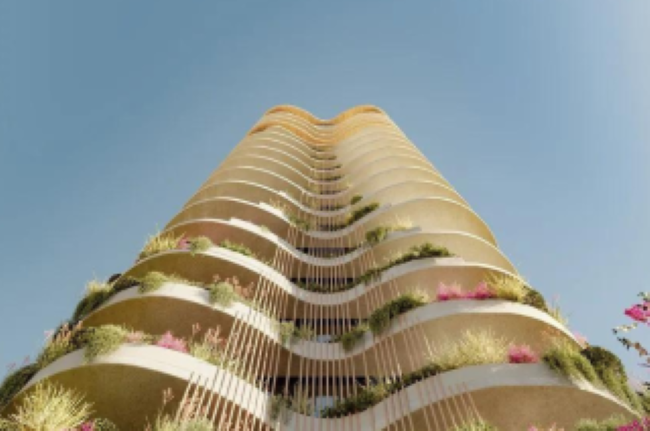The Gold Coast City Council called for expressions of interest to build a new indoor stadium. Applications close on August 15. Mayor Tom Tate says it is part of fulfilling an election promise that he would pursue a boutique stadium for the city. “For years, I have heard from global festival and concert promoters, as well as local sports and events organisations, how there is a gap in our built-form infrastructure when it comes to venues,” he says. Tate says the city misses out on events which could host between 10,000 and 12,000 people. A report by the City Officer to council says without a new stadium, the Gold Coast risks losing billions of dollars in potential income to Brisbane event venues. The last expansion of the existing Gold Coast convention centre was in 2008. A site is yet to be locked, although the report says it would need to be built on a site of about 1.5 ha to 2ha
GC To Continue To Grow
Demand for Gold Coast property is set to continue with new figures showing migration to the coastal city is high. The Regional Movers Index by the Regional Australia Institute (RAI) and the Commonwealth Bank shows that 9.4% of interstate migration was to the Gold Coast in the 12 months to June. That puts the Gold Coast within the top three regional centres in Australia for internal migration, second only to the Sunshine Coast. RAI CEO Liz Ritchie says the appetite for real estate in Queensland’s regional areas, including the Gold Coast, is continuing. She says the lure of the regions is growing, with many believing such communities offer a happier, cheaper and better quality of life. “In 2020, 67 per cent of people thought regional living would give them more time for themselves,” she says. “In 2023, this jumped to 74 per cent.” Properties on the Gold Coast attract significant online traffic, particularly from potential buyers based in New South Wales and Victoria.
Quote of the Week
“In 2020, 67 per cent of people thought regional living would give them more time for themselves. In 2023, this jumped to 74 per cent.”
RAI CEO Liz Ritchie
Unit Undersupply Continues
A severe undersupply of apartments is expected to push up rents in 2024, particularly in inner city areas, according to a new report. The CBRE report says 570,000 apartments are needed over the next three years across Australia’s capital cities, but only 55,000 apartments are being built each year. Melbourne is tipped to have a 23,800 shortfall in units next year, Sydney will be undersupplied by 18,800 units and Brisbane will be 12,100 short. The report predicts Perth will have 10,500 less units than it needs and Adelaide, 4,100. The report suggests the shortage will translate to price increases of up to 13% in parts of western Sydney and 10% in northeast Brisbane. It also forecasts rent rises of about 9% in inner city markets in Sydney, Melbourne, Brisbane and Perth. CBRE Pacific head of research, Sammer Chopra says vacancy rates in unit markets in most precincts around Australia will reduce by between 0.2% and 0.5% in the next 12 months.
Prices To End Year On High
Home prices are tipped to be up by the end of 2023 with PropTrack data predicting national property prices will increase by between 2% and 5%. It says prices are already up 2.3% for the first six months of the year and it expects almost every capital city (with the exception of Hobart and Darwin) to record positive price growth over the remainder of the year. Hobart prices are predicted to drop by between 3% and 6% while Darwin prices are tipped to drop by 3%. Perth is expected to be the strongest growth performer with PropTrack saying its prices should increase between 4% and 7% by the end of the year. It says Sydney and Adelaide are both likely to increase by between 3% and 6%), and Brisbane will be up by between 1% and 4%. Melbourne is forecast to change between a 1% fall and a 2% increase. Cameron Kusher of PropTrack says limited supply will drive price growth.
Rent Control Won’t Work
Rent control is not a solution to the current rental crisis, according to a leading academic. Professor with the school of banking and finance at UNSW, Peter Swan, says rents are high and vacancy rates are low and the increased international migration numbers this year are set to make it even worse He says not surprisingly, the Greens have come up with an “exceedingly anti-market solution” to the problem – rent control. “They propose a two-year rent freeze and action to stop ‘ruthless landlords, dodgy real estate agents and big investors’ to boot tenants out for no good reason,” he says. Professor Swan says State Governments are also threatening the same, but history shows it won’t fix the issues. He says rent freezes, mean many “mum and dad” landlords have no option but to sell their properties, putting evicted tenants back into a tighter rental market. Analysis of rent control in San Francisco shows it resulted in a 15% reduction in rental supply.









